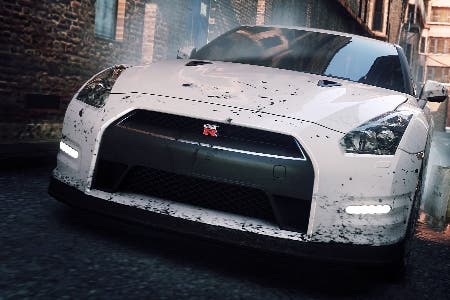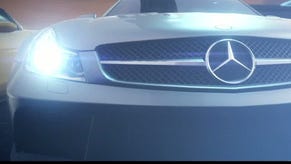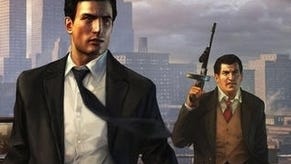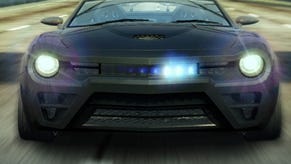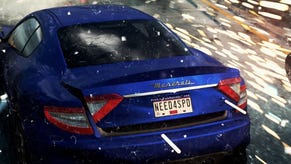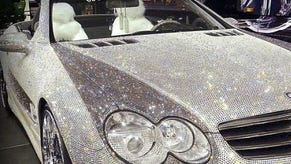Need for Speed Most Wanted review
Better to reign in hell.
This isn't paradise. Most Wanted's host city of Fairhaven is a gritty, aggressively urban location; industrial parks stretch out into docklands and construction sites, while the city centre is a chaos of scaffolding and concrete. Criterion's second run at the Need for Speed brand may evoke the much-loved Burnout Paradise with its open-world setting, but this is a game that's kept grounded by its licences, and one that feels almost po-faced by comparison.
Pitch it up against Need for Speed: Hot Pursuit and it feels different again. Whereas 2010's game had its eyes fixed intently on the horizon, Fairhaven's web of highways, side streets and alleys sees the focus shift away from pure speed, resulting in a game that's broader but never quite as thrilling. Most Wanted straddles two of Criterion's greatest racers, but while Hot Pursuit felt like a delicious collision of two disparate brands, there's a lot more compromise going on here.
Most Wanted's never less than entertaining, though. Those first moments spent investigating Fairhaven's roads are intoxicating. Criterion's stuffed the city with things to discover: secret gates can be smashed through, billboards invite you to leap through them, while the game's garage sits waiting to be discovered at various points across the map.
In the finest tradition of the open-world genre, it's initially overwhelming. There's so much to do and so much to discover that it's hard to hold on to any single thread, instead hyperactively leaping from one vehicle to another. Most Wanted's cars are, by and large, all available from the off, and there's no early restriction to milder rides; within minutes of starting it's possible to have sampled Porsches, vintage Lamborghinis and true exotica such as the Marussia B2.

The cars are uniformly great fun to drive, their handling pulled from Criterion's weighty tradition. Powerslides are delicate negotiations with a mass of steel and rubber, and there's a thick momentum to the cars that make them feel initially sluggish - that is until you're comfortable with coaxing their pendulous rear ends out to counter the trademark understeer.
The act of taming these cars is made all the more entertaining by their overstated aggressiveness. They're primitive beasts, snarling and roaring while tyre smoke streams from their bloated wheel arches. You wouldn't ever want to come across Criterion's take on a Lamborghini Aventador on a cold, lonely night.
And in one of the few throwbacks to the 2005 game with which Most Wanted shares its name, cars can be fully modded. When first discovered they're in a pure, untampered state, but success in races grants you access to nitro boosts, tuned gearing and a selection of tyres. There's even the slight creep of Call of Duty here, with different loadouts being better suited to different events.
Selecting mods is done via the d-pad (or, if you're playing on 360 and so inclined, through an unobtrusive and fairly successful implementation of Kinect voice control) as part of the inventive EasyDrive mode. This is a successor to a similar feature in Burnout Paradise that allows for access to in-game options on the fly. Races can be selected, multiplayer can be hopped into and cars swapped around while the road unfurls towards you - a seamlessness that's only broken when you inevitably meander into the scenery.
It is, being a Criterion production, extremely boisterous too. Races are kinetic affairs that spit out more sparks than a foundry at full tilt as the street furniture is mulched through by angry fenders and tyres. But beneath all this surface sound and fury the combat that's been a staple of Burnout games - and that was divided so neatly in Hot Pursuit - feels a little muted.
There are a couple of reasons why. The takedown camera that has been Criterion's tag for so long has been rudely excised, and without the dual purpose of Hot Pursuit's game of cops and robbers - in Most Wanted, you're always the robber and never the cop - there's no neat web of power-ups to work through, with the modding options making for a slightly less satisfying substitute.
Fairhaven's never quite as rich as Paradise, either, or as diverse as Hot Pursuit's Seacrest County. Offline races are limited to only four real types, while events are strictly limited to five per car - great if you want to explore the limits of Most Wanted's garage, but frustrating if you find yourself attached to any one ride in particular.
There is a single spine that runs through Most Wanted's solo mode, though. Throughout Fairhaven there are 10 vehicles that can be raced and, if you manage to beat them and then shut them down, unlocked. Each of these Most Wanted events becomes available once a certain threshold is met with the game's Speed Points, a currency that's dealt out with forceful generosity.
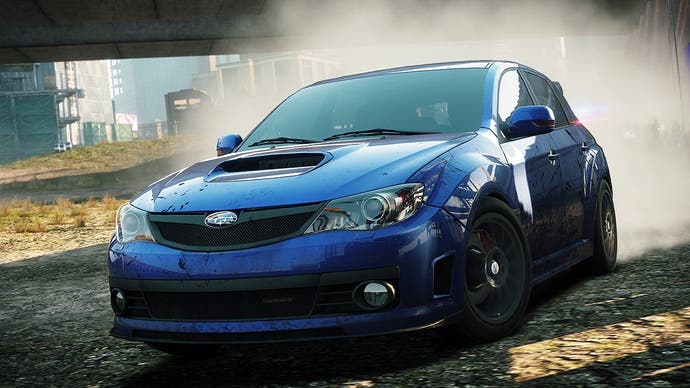
This generosity is felt elsewhere in Most Wanted, especially in its social features. Autolog returns, and once again it's the fabric that ties the whole game together - now spread even further out across the city of Fairhaven. Success is no longer measured simply in seconds - in Most Wanted, it's measured in every speed trap and every billboard that can be driven through, ensuring that every stretch of tarmac holds a meaningful, connected challenge.
Fairhaven, for all of its faults, is a great automotive playground, and it's at its absolute best when it's a playground shared. The diversity and eccentricity that's perhaps lacking in Most Wanted's single-player races has been siphoned off into a hysterical multiplayer mode that sends a gang of eight racers rampaging across the city in a series of seamless, objective-based events.
Drift through warehouses for as long as possible (or, more likely, until you're rudely interrupted by another competitor), work together to accumulate a set amount of Near Misses, or simply race from point to point. Throughout the course of one of Most Wanted's Speed Lists - a set of events that, when playing with friends, you can define yourself - every second is an opportunity for more competition.
And that's ultimately what defines Most Wanted. Its sense of character may be not be as forceful as Criterion's other games - but the sense of competition that informs it, the joy of discovery and the plain pleasure of driving haven't been dimmed in the slightest. This isn't quite paradise, but it comes very close.
